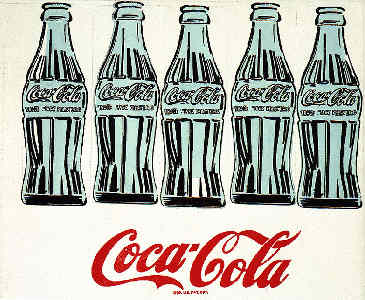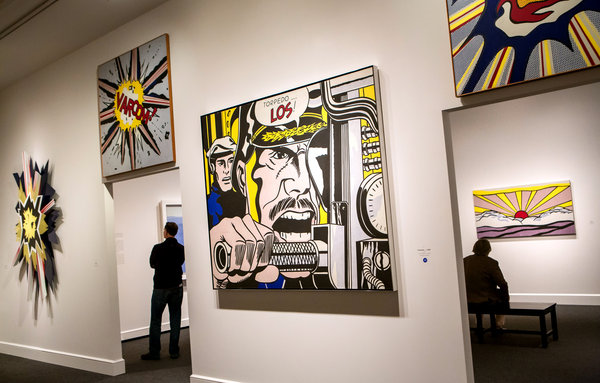Pop art was always a huge influence on my work, I love the relation it has from the Dada movement. I like how key figures like Andy Warhol took Pop beyond an artistic style to a life style, and how the work represented social issues of the time whilst using imagery to display irony in social consumerist societies and applying that to the mass cultures.
The reason for all this was that in the 1960s, there were many notions as to what art is art? Due to the evolution of the Dada Movement. There was the belief that there is no such thing as bad art, and this belief still true today. I myself became interested in this and delved into the world of Dada and pop art in college where I learnt from a man by the name of Neil at Holy Cross [Neil your a don hope your still teaching Graphics – have got hold of the school but they are lame and not told me of your current existence yet.] , these major movements changed society massively and in effect created the 90’s mash up I was born into, in turn pushing me into Educate & Elevate giving you all that nostalgic feeling but with an education also 🙂
The Education
Pop art was both an extension and a repudiation of Dadaism.
While pop art and Dadaism explored some of the same subjects, pop art replaced the destructive, and anarchic impulses of the Dada movement with detached affirmation of the artefacts of mass culture.
The Independent Group founded in London in 1952, is regarded as the precursor to the pop art movement.They were a gathering of young painters, sculptors, architects, writers and critics who were challenging prevailing modernist approaches to culture as well as traditional views of Fine Art. The group discussions centered on popular culture implications from such elements as mass advertising, movies, product design, comic strips, science fiction and technology.
Eduardo Paolozzi. I was a Rich Man’s Plaything (1947)
At the first Independent Group meeting in 1952, co-founding member, artist and sculptor Eduardo Paolozzi presented a lecture using a series of collages titled Bunk! that he had assembled during his time in Paris between 1947–1949. This material consisted of “found objects” such as, advertising, comic book characters, magazine covers and various mass produced graphics that mostly represented American popular culture. One of the images in that presentation was Paolozzi’s 1947 collage, I was a Rich Man’s Plaything, which includes the first use of the word “pop?, appearing in a cloud of smoke emerging from a revolver.
Roy Lichtenstein’s Drowning Girl (1963)
See Post on Roy Lichtenstein’s Work >
Although Pop Art began in the late 1950s, Pop Art in America was given its greatest status during the 1960s.
As the British viewed American popular culture imagery from a somewhat removed perspective, their views were often instilled with romantic, sentimental and humorous overtones. By contrast, American artists being bombarded daily with the diversity of mass produced imagery, produced work that was generally more bold and aggressive.
Two important painters in the establishment of America’s pop art vocabulary were Jasper Johns and Robert Rauschenberg. [ Again 2 artists I learnt about in a library book when I was around 14.] their concern was with social issues of the moment. Their approach was to create art out of everyday materials and using topical events in the life of everyday America gave his work a unique quality.
Johns’ and Rauschenberg’s work of the 1950s is classified as Neo-Dada, and is visually distinct from the classic American Pop Art which began in the early 1960s.
Rauschenberg’s approach was sometimes called “Neo Dadaist,” a label he shared with the painter Jasper Johns.
Rauschenberg was quoted as saying that he wanted to work “in the gap between art and life”
suggesting he questioned the distinction between art objects and everyday objects, reminiscent of the issues raised by the “Fountain”, by Dada pioneer, Marcel Duchamp. At the same time, Johns’ paintings of numerals, flags, and the like, were reprising Duchamp’s message of the role of the observer in creating art’s meaning.
Jasper Johns – Flag 1954-55
Many compilations on pop art include Jasper Johns as a pop artist because of his artistic use of classical iconography. Johns played with and presented opposites, contradictions, paradoxes, and ironies, much like Marcel Duchamp.
Of equal importance to American pop art is Roy Lichtenstein. His work probably defines the basic premise of pop art better than any other.
Selecting the old-fashioned comic strip as subject matter, Lichtenstein produces a hard-edged, precise composition that documents while it parodies in a soft manner. Lichtenstein used oil and Magna paint in his best known works, such as Drowning Girl (1963), which was appropriated from the lead story in DC Comics’ Secret Hearts #83. Also featuring thick outlines, bold colours and Ben-Day dots to represent certain colours as if created by photographic reproduction.
Pop art merges popular and mass culture with fine art, while injecting humor, irony, and recognizable imagery and content into the mix.
The paintings of Lichtenstein, like those of Andy Warhol, Tom Wesselmann and others, share a direct attachment to the commonplace image of American popular culture, but also treat the subject in an impersonal manner clearly illustrating the idealization of mass production. Andy Warhol is probably the most famous figure in Pop Art.
Warhol attempted to take Pop beyond an artistic style to a life style.
Andy Warhol was one of the most important artists of pop art, which became extremely popular in the second half of the twentieth century. Though he is best remembered for his paintings of Campbell’s soup cans, he also created hundreds of other works including commercial advertisements and films.
When it comes to the sale of a poster print, probably the most controversial decision in the history of posters sales was Andy Warhol’s decision to mass produce poster prints of his art. Perhaps the use of the word “controversial” is not an accurate assessment maybe “scandalous” would be more appropriate
When Warhol decided to create a work regarding the classic “Gods and Kings” art work of the ancient world by painting pictures of JFK and Marilyn Monroe because he felt that current, modern stars meant more to the public than the classic images of centuries past, Warhol created a sensation in the movement that would become known as “pop art.”
When Warhol added Campbell soup cans to his artwork, people thought it was the most awesome thing they had ever seen, Warhol could do no wrong. Then Warhol decided that instead of making money just by selling his artwork, he would make poster print reproductions of them and sell them at a low price en mass. At that point, the art world felt Warhol had done wrong, a huge wrong.
Releasing poster print reproductions of serious art was considered a crass commercialization. However, those who raved about Warhol’s pop art movement but decried his poster print sales totally missed the point of pop art.
Pop art was about demystifying the seriousness of the art world and making it a nonrealistic, commercialized movement. Selling thousands of poster prints fit right into this mold.



Luckily, Warhol was undeterred. Then again, it would be hard to be deterred when people were buying his poster prints in huge volumes. Soon after, the sales of other work that was reproduced as poster prints were released into the marketplace. Today, one can find a poster print reproduction of virtually every famous artist, although pop art, surrealism, and abstract art seem to be the most popular. Warhol truly was a visionary ahead of his time. [ By The Way Post Coming On Andy Warhol Soon.]
These artists challenged art itself and changed societies perception of it for a whole generation of mass consumerism. Funny how a movement in turn has created a western society of consumption. Where now Warhol rip off can be bought in your local home bargain’s [think only UK viewers will get this…Wallmart for you american folk (sorry if that was a bit stereotypical.)] for a £5 reproduction.
Just wanted to keep the idea behind it all alive as I feel it has been forgotten in today’s mass consumerist society. These guys were pioneers! Educated you all to a different perception of life and elevated you out of the grind by making mass audiences realise just for that second the stupidity of the commercialist world.
I aim in some way to apply this to my own work as I progress with Educate & Elevate. And make consumerist society view a positive message amongst all wrongly mastered ones. And I’m going to educate them on the way. These designs were created to pass a message to society just like our clothing line educate & elevate.






Learning about Dadaism gave me a new appreciation for pop art.